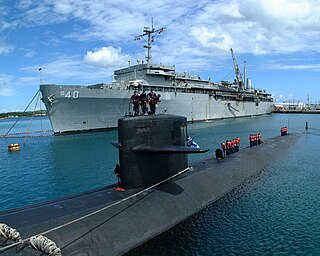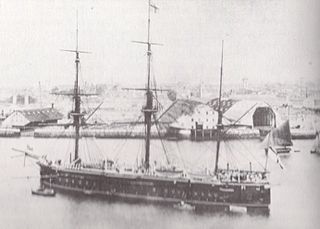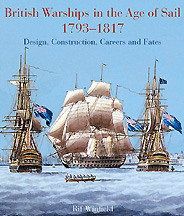
A submarine tender, in British English a submarine depot ship, is a type of depot ship that supplies and supports submarines.

USS Atlanta was a protected cruiser and one of the first steel warships of the "New Navy" of the 1880s. In some references she is combined with Boston as the Atlanta class, in others as the Boston class.

The British Royal Navy's ironclad Admiral-class battleships of the 1880s followed the pattern of the Devastation class in having the main armament on centreline mounts fore and aft of the superstructure. This pattern was followed by most following British designs until HMS Dreadnought in 1906. They were known as the Admiral class because they were all named after British admirals, such as Admiral George Anson.

HMS Prince of Wales was one of six 121-gun screw-propelled first-rate three-decker line-of-battle ships of the Royal Navy. She was launched on 25 January 1860.

In late 19th-century naval terminology, torpedo gunboats were a form of gunboat armed with torpedoes and designed for hunting and destroying smaller torpedo boats. By the end of the 1890s torpedo gunboats were superseded by their more successful contemporaries, the torpedo boat destroyers.

HMS Swiftsure was the lead ship of the Swiftsure class battleships built in the late Victorian era. Her sister-ship was HMS Triumph.

The Swiftsure class battleships of the late Victorian era were broadside ironclads designed and built specifically for service as Flagships on the Pacific station.

HMS Actaeon was a 26-gun sixth-rate frigate of the Royal Navy.

HMS Cormorant was an Osprey-class sloop launched at Chatham on 12 September 1877 and later the receiving ship at Gibraltar. She was renamed Rooke in 1946 and broken up in 1949.

The Sail and Steam Navy List: All the Ships of the Royal Navy 1815–1889 by Rif Winfield and David Lyon is a historical reference work providing details of all recorded ships in commission or intended to serve in the Royal Navy from 1815 to 1889. Where available in Admiralty records, it gives the location of construction, dates of construction, principal dimensions and tonnage, armament, machinery and fate of every ship of the Royal Navy over the period.

The Astraea class was an eight ship class of protected cruisers built for the Royal Navy during the 1890s. The ships served on a number of foreign stations during their careers, particularly in the waters of the Indian and Pacific Oceans, and around the Cape of Good Hope. Already obsolete by the outbreak of the First World War, most continued to see service in a variety of roles, though rarely in a front line capacity. By the end of the war the majority were being used as training or depot ships, and they were soon sold out of the service and scrapped. However, one ship, HMS Hermione, was bought by the Marine Society and used as a training ship until 1940.

HMS Royal Albert was a 121 gun three-decker ship of the Royal Navy launched in 1854 at Woolwich Dockyard. She had originally been designed as a sailing ship but was converted to screw propulsion while still under construction.

HMS Vulcan was a British torpedo boat depot ship launched in 1889, later converted to a submarine tender in 1908-09. As a training hulk, she was renamed HMS Defiance III in 1931 and used for training at Torpoint, Cornwall. She was scrapped in Belgium in 1955.

British Warships in the Age of Sail is a series of four books by maritime historian Rif Winfield comprising a historical reference work providing details of all recorded ships that served or were intended to serve in the (British) Royal Navy from 1603 to 1863. Similar volumes dealing with other navies during the Age of Sail have followed from the same publisher.

HMS Sapphire was an Amethyst-class corvette built for the Royal Navy at Devonport Dockyard and launched on 24 September 1874.

HMS Diamond was an Amethyst-class corvette in service 1874–89.

HMS Lily was an Arab-class composite gunvessel built for the Royal Navy. She was launched in 1874, saw service in Chinese and North American waters, and was wrecked on the coast of Labrador on 16 September 1889.

HMS Wild Swan was an Osprey-class sloop built for the Royal Navy in the mid-1870s. She was launched in 1877 and became a base ship in 1904, being renamed Clyde. She was renamed Columbine in 1913 and was sold for breaking in 1920.
A number of ships of the Royal Navy have borne the name HMS Dee, after one or other of the British rivers called the Dee.
This page is based on this
Wikipedia article Text is available under the
CC BY-SA 4.0 license; additional terms may apply.
Images, videos and audio are available under their respective licenses.
















